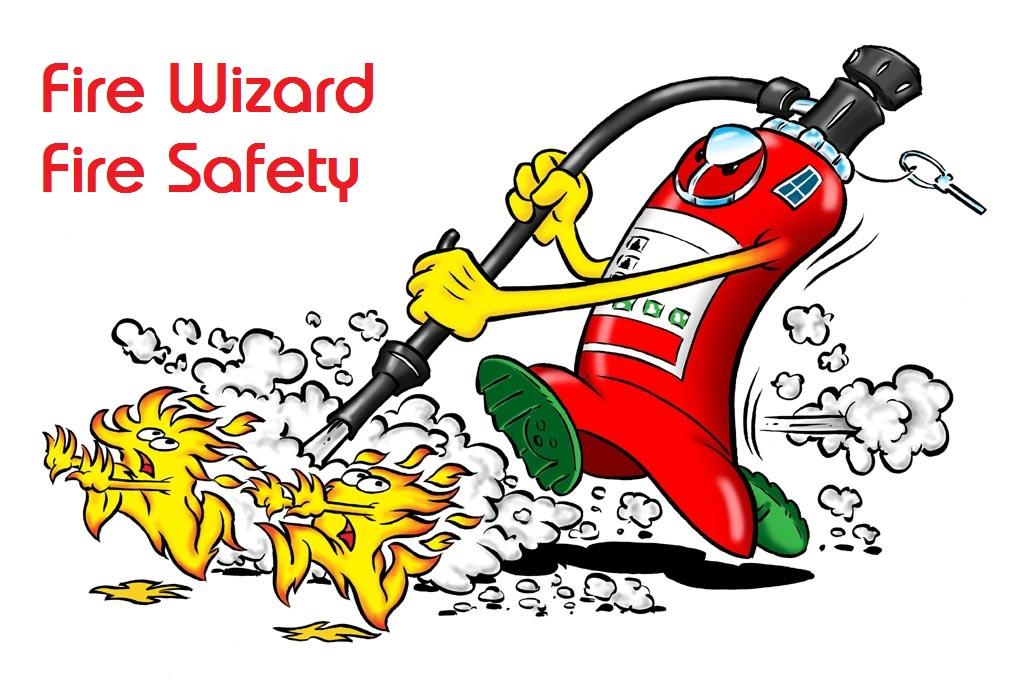-
Posts
2,703 -
Joined
-
Last visited
Everything posted by AnthonyB
-
Nothing is absolute if a convincing case can be made. I wouldn't want it myself as for it to be effective it would affect your premises' security
-
An inward opening door can normally be used for up to 60 persons. Building Regulations do not allow escape routes through other occupancies (nor would you want this from a security aspect) so they shouldn't be doing this in the first place.
-
I'm guessing it was this: http://www.bre.co.uk/eventdetails.jsp?id=15147 Seems to give you the required competence as would be required by legislation. Perhaps your employer or their clients need a third party certified repair & install service?
-
They are different to the BWF ones but still look useful and handy!
-

Are refurbished fire extinguishers allowed in a business environment?
AnthonyB replied to a topic in Fire Extinguishers
Why not? The legal requirement is a CE mark and a well established manufacturer has a range of extinguishers without a kitemark. Also prestige polished finish extinguishers are fine but not kitemarked. I've personally watched CO2 extinguishers being overhauled and refurbished along the production line and have seen nothing to concern me. Most started out as kitemarked anyway! I prefer kitemarked product but don't treat non kitemarked stuff as unsuitable.- 15 replies
-
- refurb
- refurbished extinguishers
-
(and 1 more)
Tagged with:
-
The following category combinations exist: M - Manual (Call points & sounders). L5 - Life Risk specific detection (no call points, sometimes no sounders) L5/M - Life Risk specific detection (with call points and sounders) L4 - Escape route detection L3 - As L4 plus rooms opening onto escape routes L2 - As L3 plus risk specific additional areas L1 - Everywhere (almost!) L1 to L4 do not require the /M suffix as they MUST always include call points and sounders P2 - Property risk specific detection (must be monitored, longer standby times, no call points, may have no or limited sounders) P1 - Property protection detection everywhere (almost - also must be monitored, longer standby times, no call points, may have no or limited sounders) P2/M & P1/M Property protection systems also incorporating call points and sounders to meet the minimum life safety requirements You can also mix P & L systems such as P2/L4 which would be a building with manual call points and sounders, escape route detection for life safety and then some additional detection for a property protection purpose along with remote monitoring.
-
Flat front doors still require closers. Flat internal doors used to require closers, but this was dropped in revisions to Building Regulations as they were almost universally removed by residents. You don't need to fit them and if you have an older flat you no longer need to retain them.
-
These old doors, which often are steel with an asbestos core, are for compartmentation purposes and are usually at least 2 hours and often 4 hours. What level of performance are you needing?
-
If it dates back to Victorian times whilst it may be a good solid door it's unlikely to have the 44mm thickness you would expect for a notional 30 minute fire door. Heritage doors that cannot be replaced with modern fire doors are often uprated to notional standards by the use of, for example, intumescent papers or varnishes applied to the risk side.
-
The history of the regulations is contained here: https://www.local.gov.uk/sites/default/files/documents/fire-safety-purpose-built-04b.pdf Basically front doors being fire doors stems from around 1962 onwards. Internal fire doors are similar, although the exact doors changes over the years. Fire doors are ideally third party certified and marked with either top labels or side fitted plugs (depending upon which scheme they are approved under) but it isn't mandatory and of course many doors were installed before these schemes existed. Lack of labelling can complicate matters but does not cause the door to fail.
-
A simple fastening not requiring a key or code and ideally a single action to release is the usual requirement - it's not impossible to have a safety gate and keeping broadly within these requirements. How many people may need to use the stair and is there any staffing based in the area?
-
No, it's not - it's all about where you are placing it. One type of material may be fine in an exhibition hall, yet the same item in the stairway could be a no no.
-
Assuming you already hold the required qualifications in fire alarm system installation, commissioning and maintenance then you need: http://www.fia.uk.com/training/training-course-browser/unit-7-fixed-extinguishing-systems-and-associated.html and because you will need to have your staff F-Gas certified before you can work with the HFC based agent systems: http://www.fia.uk.com/training/training-course-browser/f-gas-certification-for-individuals.html
-
Normally the lack of a fire rating and fire class symbol on an extinguisher means it is ineffective or dangerous on that Class, but with water mist it's just that it can't meet the minimum ratings for a given mass of agent in the manufacturing standard BSEN3 - as stated the 3 litre actually can put out a 13B fire and the 6 litre is 21B . The 1l hasn't been submitted for A and B rating tests but is safe on these fires, just on very small ones. In the domestic setting if it's too big for the 1 litre it's beyond what a householder should be tackling anyway. Personally the water mist would be ideal in the house with foam in the garage
-
Since 1 April 2002 building regulations have applied to all replacement glazing, including fire safety - you should contact your Local Authority Building Control department for guidance. Guidance on the different types of residential block fire risk assessment to suit the different legislation (Fire Safety Order and Housing Act) is in this guide: https://www.local.gov.uk/sites/default/files/documents/fire-safety-purpose-built-04b.pdf
-

Problems with fitting FD60s doors in general needs high rise.
AnthonyB replied to a topic in Fire Doors and Accessories
Until the Grenfell Inquiry makes recommendations any knee jerk broad brush response is premature and possibly unnecessary. The LGA Guide has been restated as the benchmark and exceeding it should be based on an individual risk assessment. -
I note TYCO recharged it, but must have used a cartridge from another scrap unit and a non verified additive solution. The cost to get it filled with new parts and components is such it would be cheaper to give you a new unit.
-
They are so rare (due to price) that whilst current they are technically collectible for those in the trade that are collectors of historical stuff like me, but realistically its only fit for the tip. They can cost £450 up to each and no one other than Nu Swift (or another member of the London Securities group) can correctly service them or recharge them as they use proprietary parts not available to the trade. For example, most other makes of cartridge operated extinguisher (rare to see these days too) use a pretty standard set of CO2 cartridges, I can use the same 55g PVC CO2 cartridge across about half a dozen makes of extinguisher. Nu Swift instead use a cartridge filled with N2 and a non standard thread.
-
You don't need Powder for a Boiler room as the British Standard only requires cover for gas fuelled fires where specialist personnel are available on site. Fighting a gas main or cylinder fire is extremely dangerous in itself, the resultant explosion risk from leaking gas after extinguishing the flame greater still. Gas fires should only be tackled by means of cutting off the supply. Once done you no longer have a gas fuelled fire, so you don't need a Powder extinguisher. Really the only small fire safely fightable in a boiler room is in the control equipment, for which CO2 suits.
-
The reference to the BS is indeed BS. Your water extinguishers just need a Basic Service until they are 5 years old at which point they need an Extended Service where they have to be removed from the premises, discharged, stripped down, internally examined, and recharged with all new O rings and seals. Some companies will replace new as oppose to doing the Extended Service. Your CO2 extinguishers only need a Basic Service until they are 10 years old at which point, due to being high pressure cylinders, they require pressure testing and revalving. Some companies will exchange your units for ones tested & refurbished that year, others will just replace with new.
-
Realistically you need a new door! Whilst there will always be the odd exception a 30 minute fire door will be 44mm thick, a 60 minute door 54mm thick. You will find on the internet old guidance on upgrading doors by all sorts of means such as screwing supalux boards onto doors on the fire side, etc, but these are completely untested and cannot guarantee any performance compared to a new third party certified door blank. Not only do you have to consider the door, you have to consider the seals, frame, etc as well
-
Does he do the weekly testing and arrange the 6 monthly servicing for you? If you are expected to do it you need access. Also if it's activated you need access to reset it (if not a fire) and to see where the fire is (if it is and a detector triggered it not you). Your Fire & Rescue Service enforces Business Fire Safety and can assist if you feel this obstruction could present a risk or non compliance.
-
Possibly - the staircase is the escape route and the requirement is not only to keep protected escapes clear but also have them free from combustibles and ignition sources.
-
A fire blanket would be of little use as it wouldn't be big enough, wouldn't stay in place and you'd not be able to get to the the area on fire - look at this video and remember the fridge/freezer would have the area on fire behind it facing the wall: Whilst a CO2, Water Mist, Triclass or Powder extinguisher would be suitable, difficulty of access to the seat of the fire and the amount of fire effluent being produced in the confines of a kitchen would preclude a safe and effective attack. Best to switch off the socket (if immediately accessible and not blocked by the fire) get out the kitchen shutting the door behind you and evacuating.
-
The type of extinguisher required varies widely - some require 1l foam, others 600g Powder, 1kg powder, etc, etc. You need to check with the local council. If the licensing board require an extinguisher as a condition of license then it is in effect a legal requirement........if you want to be able to operate with a license...

